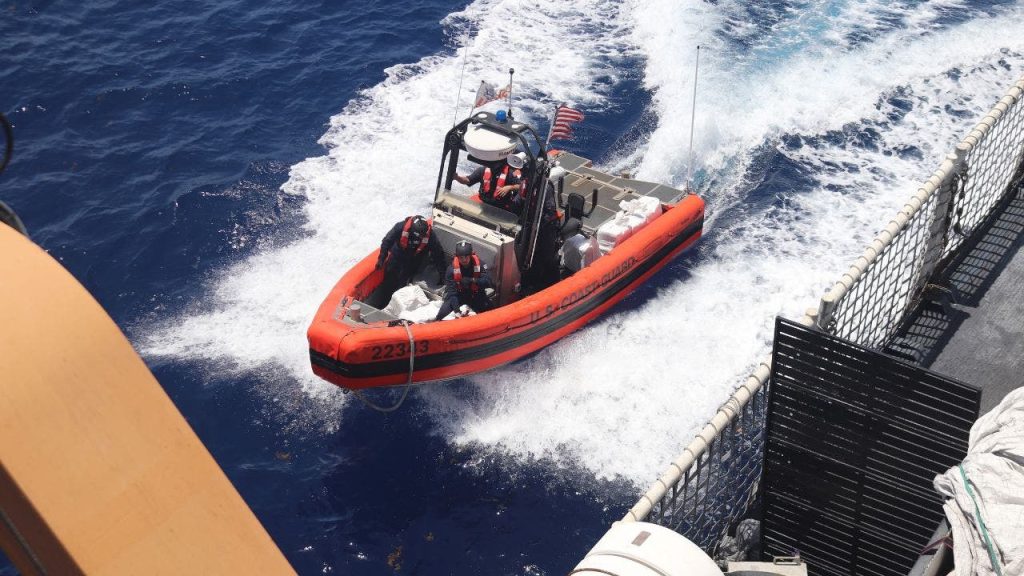Listen to the article
Coast Guard Revises Policy on Extremist Symbols, Removes “Hate Incident” Terminology
The U.S. Coast Guard has implemented a significant policy change regarding how it classifies displays of swastikas, nooses, and other extremist symbols, according to documentation first reported by The Washington Post. The service will no longer refer to these displays as “hate incidents,” instead categorizing them as “potentially divisive symbols and flags.”
Despite this terminology shift, Coast Guard leadership insists the change does not represent a relaxation of standards or enforcement. Admiral Kevin Lunday, acting commandant of the Coast Guard, forcefully rejected the notion that the service was softening its stance on extremist imagery.
“The claims that the U.S. Coast Guard will no longer classify swastikas, nooses or other extremist imagery as prohibited symbols are categorically false,” Lunday said in a statement Thursday. “These symbols have been and remain prohibited in the Coast Guard per policy.”
The policy revision explicitly maintains the ban on Confederate battle flags in all Coast Guard workplaces, common access areas, public areas and operating facilities. The prohibition on public display of the Confederate flag remains unchanged from previous guidance.
Under the new framework, commanding officers retain the authority to investigate displays of symbols identified as “potentially divisive” and can order their removal if determined to negatively impact morale or mission readiness. While the terminology has changed, the Coast Guard maintains that these symbols remain “extremist imagery” and displays will continue to be “thoroughly investigated and severely punished.”
One significant procedural change involves how incidents are processed. Cases previously handled as “potential hate incidents” will now be processed as harassment reports when there is an identifiable aggrieved individual. The new guidance completely eliminates the term “hate incident” from Coast Guard policy.
“The Coast Guard remains unwavering in its commitment to fostering a safe, respectful and professional workplace,” Lunday emphasized. “Symbols such as swastikas, nooses and other extremist or racist imagery violate our core values and are treated with the seriousness they warrant under current policy.”
The updated policy also introduces time constraints for reporting harassment. Under the new guidelines, non-sexual harassment incidents must be reported within 45 calendar days, though the policy allows discretion for accepting reports beyond this timeframe. This marks a departure from previous policy, which imposed no deadline for reporting such incidents.
The policy revision has already drawn criticism from some lawmakers. Representative Rick Larsen of Washington, the top Democrat on the House Transportation & Infrastructure Committee, which has oversight authority over the Coast Guard, issued a strong rebuke following news of the change.
“Lynching is a federal hate crime. The world defeated the Nazis in 1945. The debate on these symbols is over. They symbolize hate,” Larsen said in a statement. “Coast Guard: be better.”
The Coast Guard, which falls under the Department of Homeland Security rather than the Department of War like other military branches, stated that its policy updates were made in alignment with orders from President Donald Trump and the Pentagon. The service has been undergoing broader organizational changes through initiatives like Force Design 2028 to align more closely with other military services.
This policy revision comes as Secretary of War Pete Hegseth directed the Pentagon to conduct a review of its own hazing and harassment policies in September. The Pentagon already maintains extremism guidelines that effectively prohibit displaying Confederate flags or those with swastikas, permitting only preapproved flags such as state flags or military service flags.
The Coast Guard has not provided additional explanation for removing the specific term “hate incident” from its policy vocabulary, raising questions about the reasoning behind the terminology shift despite assurances that enforcement remains stringent.
Fact Checker
Verify the accuracy of this article using The Disinformation Commission analysis and real-time sources.




10 Comments
The Coast Guard’s claim that this change doesn’t represent a ‘relaxation of standards’ seems questionable. Softening the language around these symbols could send the wrong message and undermine efforts to create an inclusive, welcoming environment.
That’s a fair concern. The optics of this policy shift are problematic, even if the underlying intent is to maintain the same level of prohibition. Clear communication and consistent enforcement will be crucial.
Symbols like swastikas and Confederate flags have undeniable ties to hate, oppression, and white supremacy. While I appreciate the Coast Guard’s intent to maintain prohibitions, the terminology shift feels like a concerning step backward in addressing these issues head-on.
I share your concerns. Even if the underlying policy remains the same, the language used to describe these symbols matters a great deal in terms of how they are perceived and confronted.
While I understand the desire to use more neutral terminology, the symbols in question have deeply troubling historical and ideological associations. Removing the ‘hate’ designation risks downplaying their harmful significance.
I agree. Changing the terminology doesn’t change the reality of what these symbols represent. The Coast Guard needs to be vigilant in addressing the presence of such imagery, regardless of how it’s classified.
I’m curious to know more about the rationale behind this decision. Was it driven by legal or administrative considerations, or is there a deeper philosophical shift in how the Coast Guard views these symbols? Transparency around the reasoning would help allay concerns.
That’s a good question. The Coast Guard’s explanation doesn’t seem fully convincing, and more context would be helpful to understand the motivations behind this policy change.
This policy change seems concerning, as symbols like swastikas and Confederate flags have clear ties to hate and extremism. I hope the Coast Guard maintains a firm stance against the display of such divisive imagery, regardless of the terminology used.
You raise a good point. It’s important that the Coast Guard’s actions align with their stated intent to prohibit these symbols, not just in language but in enforcement as well.